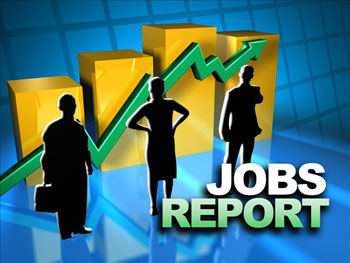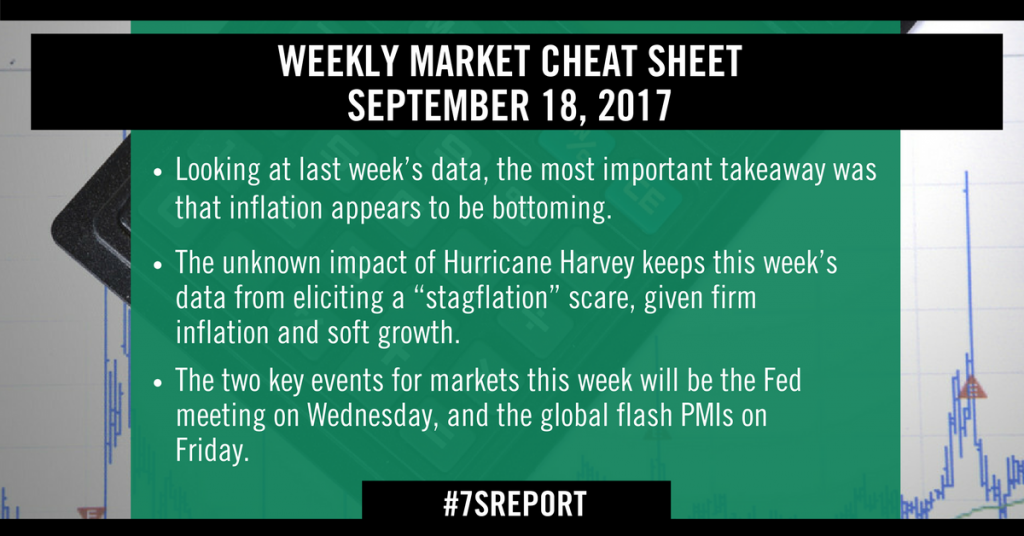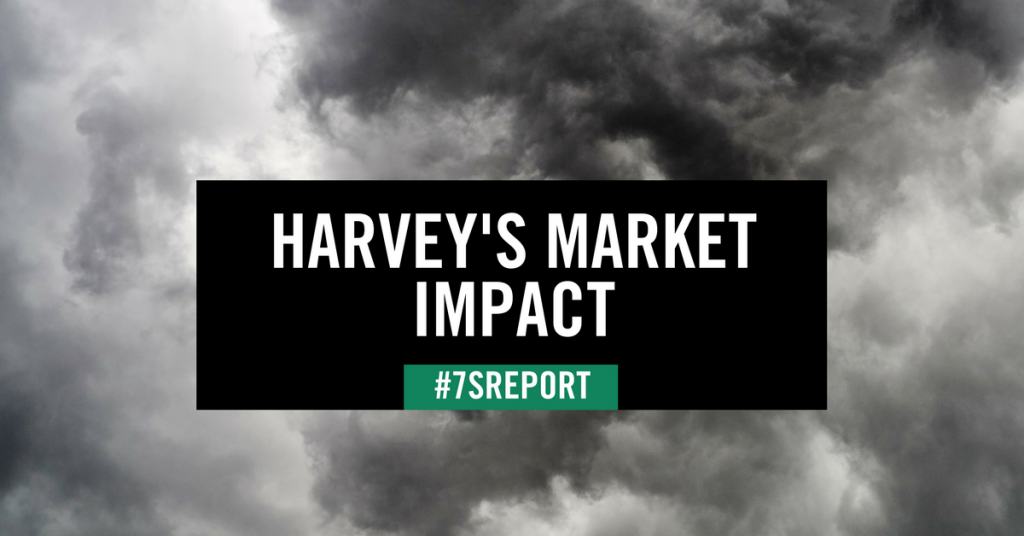Jobs Report Preview, October 5, 2017
The Sevens Report is everything you need to know about the markets in your inbox by 7am, in 7 minutes or less. Start your free two-week trial today and see what a difference the Sevens Report can make.
Hurricanes Irma and Harvey have sapped some of the importance from tomorrow’s jobs report because it’s likely going to be temporarily distorted lower than it should otherwise be. Case in point, the expectation is for 100k job adds when it should normally be about double that. So, it’s likely we’ll get a soft number and it’ll be dismissed by the markets.
But, it’s not clear what impact the storms will have on the wage component (theoretically it shouldn’t be much). Regardless, the practical effect is that is we see a soft number tomorrow (jobs and wages) it will be handed a relative pass given the storms.
That said, the jobs report still remains very important from a “reflation rally” standpoint. This week, the Manufacturing and Non-Manufacturing PMIs and auto sales have all helped to push stocks slightly higher, despite the market’s clear preference to see some profit taking in the reflation sectors. If tomorrow’s jobs report is “Just Right” and the wage number is firm, that will add fuel to the “reflation rally.”
From a practical standpoint, I’ll be adding about 75k jobs to whatever the number is on Friday to account for one-time, Hurricane Harvey/Irma-related declines.
“Too Hot” Scenario (A December Rate Hike Becomes 100% Certain, Risk Increases for More than Three Hikes in 2018)
>200k Job Adds, < 4.1% Unemployment, > 2.8% YOY wage increase. A number this hot will reinforce that an economic reflation is in deed underway, and it’ll likely make the Fed marginally more hawkish. Likely Market Reaction: This would not result in a “Virtuous Reflation.”…withheld for subscribers only—unlock specifics and ETFs by signing up for a free two-week trial).
“Just Right” Scenario (Leaves a December Rate Hike Likely But Not Certain)
• 50k–200k Job Adds, > 4.2% Unemployment Rate, 2.5%-2.8% YOY wage increase. This gap is really wide because of the hurricanes, but the best scenario for stocks would be a print at the upper end of this range. Likely Market Reaction: A continued “Virtuous” reflation…withheld for subscribers only—unlock specifics and ETFs by signing up for a free two-week trial).
“Too Cold” Scenario (Economic Growth Potentially Stalling)
< 50k Job Adds, < 2.5% YOY Wage Gains. Again, this number is artificially low because of the hurricanes, but if we see a big disappointment in the jobs number and a further softening of wage inflation that will send bond yields lower, but it would also likely weigh on stocks as it will raise concerns about economic growth. Likely Market Reaction: Bonds and gold should…withheld for subscribers only—unlock specifics and ETFs by signing up for a free two-week trial).
Time is money. Spend more time making money and less time researching markets every day. Subscribe to the 7sReport.com.


